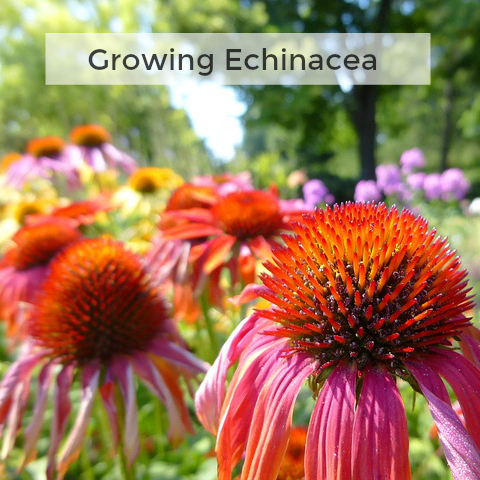
Echinacea has long been treasured for its medicinal qualities*. Archeologists believe that Native Americans used echinacea to treat illnesses for hundreds of years before the arrival of European settlers.
Today, echinacea is used to improve immune function and to reduce the severity of many ailments, including the common cold, flu and upper respiratory infections.
Growing tips and facts
In addition to its medicinal applications, echinacea is prized for its ornamental blooms, as well. The most common variety of echinacea is also known as purple coneflower due to its striking petal color. However, blooms can be found in many other colours, as well, including pink, orange, white, yellow and red.
Echinacea is an easy-to-grow perennial. It can be grown from seed, transplants or by division of established plants. It is a very hardy plant that can thrive in most conditions with very little attention.
Echinacea prefers full sun, but will also do well in light shade. In hot climates, shade yields more vibrantly colored flowers.
Tips for using and preserving echinacea
You can use the petals, leaves and roots of echinacea plants to make herbal tea or tinctures, which is a medicine made by dissolving a substance in alcohol.
Harvest the leaves and flowers as soon as the flowers begin to bloom by snipping each stem right above the bottom set of leaves. Remove the flower buds and leaves, then discard the stems. Allow to dry thoroughly in an interior room. Exposure to sunlight can reduce the efficacy of echinacea after cutting and remaining moisture can lead to mold.
Roots should be harvested in the fall after the foliage has turned brown. Hand dig the amount you need, but leave plenty for next year’s growth. Wash thoroughly and allow to dry for several days on screens. Weight loss during this process is significant. Plan for ¾ of the volume to be lost.
Store dried petals, leaves and roots in an airtight container in a pantry or cupboard until ready to use.
*This information is for entertainment purposes only. It should not be construed as medical advice.


Leave a Reply